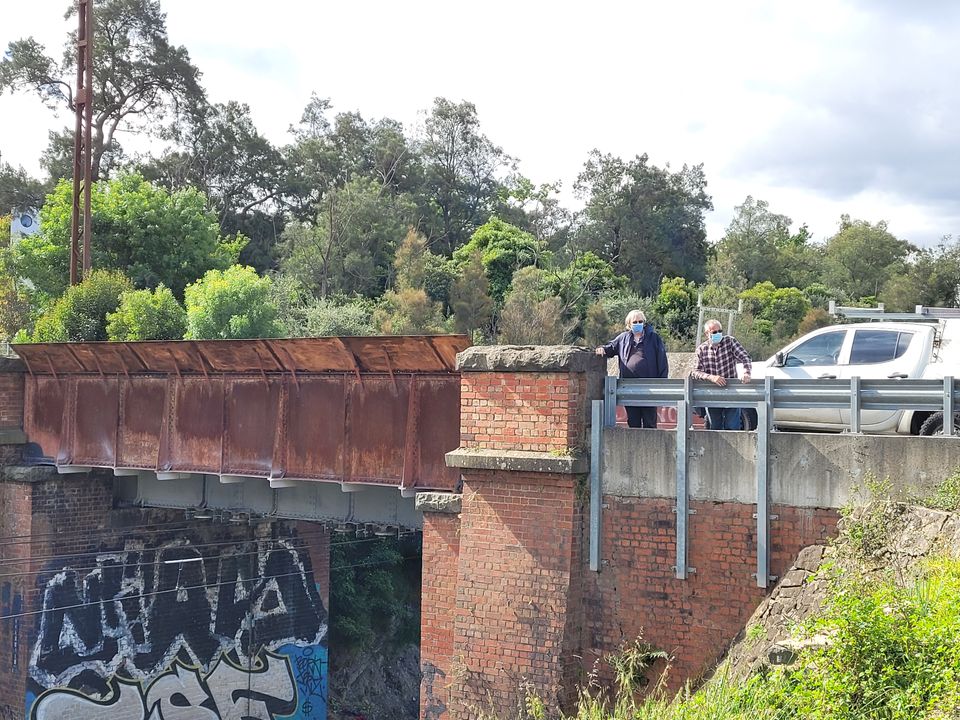Odenwald Road Bridge - The Sorry Saga Continues

Confirmation by Banyule Council that Odenwald Road bridge is so structurally precarious as to preclude pedestrian safety trials is exasperating.
Banyule has sent an update of its unsuccessful dealings with Metro Trains Melbourne to Shaping Banyule subscribers:
|
|
It is likely exasperating for the Banyule Council traffic engineers also - they comprehend the deficiencies of the 1888 bridge but are "hogtied" by the VicTrack ownership and the Metro Trains Melbourne control of the site.
This leaves us with a dastardly state of affairs.
Banyule Council is the responsible road traffic authority - responsible for vehicle and pedestrian safe use of the structure.
Banyule Council has a so-called "state of knowledge" of the risks to public safety posed by the condition of the bridge - which was never designed, built or modified for use by mechanised transport.
In 1888 no internal combustion engine powered road vehicle had been seen in Australia - it was not until 1886 that Karl Benz in Germany patented his first 3 wheeled motorwagen, and his wife took her famous 60 mile drive to prove the concept.

Karl's wife Bertha demonstrated its feasibility in a trip from Mannheim to Pforzheim in August 1888, shortly before it became the first commercially available automobile in history in the late summer of 1888.
Odenwald Road bridge was built by the rail authorities due to their obligation to not interrupt access to contiguous private lands by placement of a rail line.
Safe level crossings, underpasses or bridges were required by law.
The same situation applied at Rose Street Ivanhoe, where a bridge with 2 footpaths was installed - there were many houses in the then village of Ivanhoe.
In 1888 Odenwald Road did not exist - there was a mere farm track used by horsedrawn farm vehicles to approach a single farmhouse!
135 years later this same bridge is still in use - albiet reduced from an unlimited load limit as recently as 2021 to 14 tonnes.
The recognition of the safety hazard only came about because Friends of Eaglemont Village battled the denying, resisting railway authorities until they were forced to recognise the problem - and instigate remedial measures and repairs.
Banyule Council now faces a quandary.
It's preferred position of a separate pedestrian bridge adjacent the road bridge was estimated to cost around $1.5 million 3 years ago.
Council sought to have the State Government fund this - without success - and now the State Government's budgetary position makes this less likely.
The bridge has now been acknowledged by the State Government as incapable of carrying additional load on its structure or foundations.
The appropriate next step is for the State Government to accept the existing bridge is:
- needed
- structurally unsound
- posing a danger to rail and road users
- its responsibility.
Banyule Council has elevated this matter to be one of its key "advocacy" topics with a thus-far deaf State Government.
Perhaps ineffectual advocacy needs to become legal action by our Council to force the unwilling State Government to discharge its legal obligations.
Perhaps political action is needed from Eaglemont locals to make politicians aware this daily safety matter is a vote changer.
We pay Council rates expecting services and facilities in return.
We pay State Government taxes, fees, fines and charges expecting services and facilities in return.
We are being dudded.
Member discussion